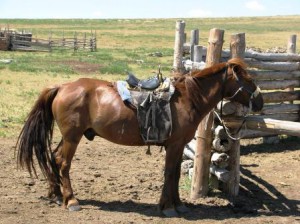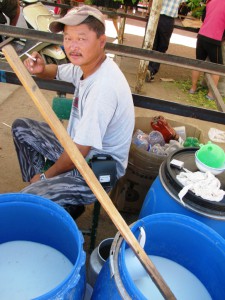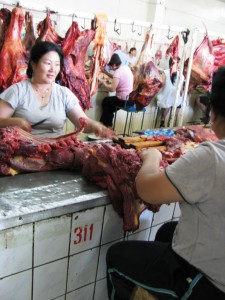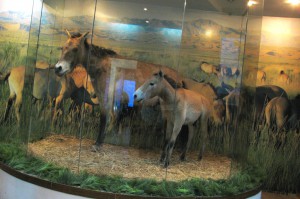- Conserving dambos for livelihoods in southern Africa. How many CWRs are found in such wetland habitats around the world, I wonder.
- Cucumis not out of Africa.
- Exploring “the connection between traditional knowledge of herbs, edible and medicinal plants and media networked culture.” And why not.
- PBS video on malnutrition.
- Fungal exhibition at RBG Edinburgh.
- Indian Council on Agricultural Research framing guidelines for private-public partnerships in seed sector. That’ll stop the GM seed pirates.
- Conserve African humpless cattle! They’re needed for breeding.
- UG99 — and crop wild relatives — in the news. The proper news. The one people pay attention to.
- Vanilla lovers better start stocking up.
- Kenyan farmers earning money selling sorghum to brewers. What’s not to like.
Nibbles: Breeding, Art, Bison, Pumpkin seeds, Sweet potato, Bambara groundnut, Carnival
- Cary Fowler on the need to breed.
- MRIs of fruits and vegetables. Well, why not?
- The genetic consequences of bovine inter-specific sex explained. SFW.
- How Mrs Joséphine Enoce Bouanga makes milk from squash seeds in Pointe-Noire.
- Gates Foundation orange sweet potato project in Mozambique. Still waiting to hear what they’re going to do with all those useless landraces they’ll be replacing.
- Nourishing the Future does Lost Crops of Africa 101. Beginners, start there, but don’t expect to be taken anywhere interesting.
- Blog carnival Scientia Pro Publica #35 is up, but what’s with the verse alphabetical order? Harummph.
A different kind of pawpaw
WebEcoist has a nice series of slideshows on “70 Extremely Exotic Plants, Flowers, Forests & Trees.” Kinda silly, I know, but I’m a sucker for photos of weird plants, I guess. Anyway, the one on “Deliciously Exotic Plants, Fruits and Vegetables” puzzled me for a minute because the picture labelled “pawpaw” is certainly no Carica papaya. In my ignorance, I thought the term pawpaw was only ever used as a synonym for papaya. Well, it turns out the fruit in the picture is also called Hoosier banana, and is in fact Asimina triloba. Related to the cherimoya (Annona cherimola), “[t]he pawpaw is native to the temperate woodlands of the eastern U.S. The American Indian is credited with spreading the pawpaw across the eastern U.S. to eastern Kansas and Texas, and from the Great Lakes almost to the Gulf.” There’s a festival devoted to the fruit in Ohio in September. Interestingly, if you search Wikipedia for pawpaw, it sends you straight to Asimina. A Google search also returns mainly Asimina stuff, but if you search images you get a mixture of Carica and Asimina. The dangers of using common names.
Nibbles: Danone, Street food, Makutano Junction, Canberra, Africa, Markets, Veggies
- Let them eat yoghurt. Danone targets the poor. h/t Tom
- Eating Mexico City, one street at a time. Bookmarked.
- It’s The Archers, Jim, but not as we know it. Soaps spread (agro)innovation.
- The Crawford Fund Conference does biodiversity (in Australia)
- New Agriculturist reports on a discussion of development in Africa. Is anybody listening?
- Food markets freed! A little. In one US state.
- Local leafy greens all the rage in Kenya. Yeah, yeah. No but seriously, one of the great changes in the past 10 years, and a major agrobiodiversity success story.
The horse in Mongolian culture
 They may be trying to develop and diversify their agriculture now (well, since the 1950s), but Mongolians are traditionally very much a nomadic herding culture, with the horse at its centre. 1 One expression of that is how early kids learn to ride.
They may be trying to develop and diversify their agriculture now (well, since the 1950s), but Mongolians are traditionally very much a nomadic herding culture, with the horse at its centre. 1 One expression of that is how early kids learn to ride.
Most young Mongolians — boys in particular — learn to ride from a very young age. They will then help their fathers with the herding of goats, sheep and horses. Some children have a chance to ride at festivals called Naadam — the biggest of which is held on 11th-13th July in Ulaanbaatar — though there are naadams held throughout the year all over the countryside. Young jockeys between the age of 5 and 12 (girls and boys) race horses over distances ranging from 15km to 30km. There are 6 categories for the races depending on the horses’ age, including a category for 1 year old horses (daag) and one for stallions (azarag).


Alas, this museum display is as close as I got to seeing the famous Mongolian Wild Horse or Przewalski’s Horse (Equus ferus przewalskii), locally known as takhi.
It’s possibly the “closest living wild relative of the domesticated horse, Equus caballus.” Certainly it is genetically very close to the local domesticated breed based on molecular markers, though that could be because of interbreeding. Last seen in the wild in 1969, its restoration in China and Mongolia from captive stock, for example to the Hustain Nuruu National Conservation Park, is one of the great conservation success stories.
